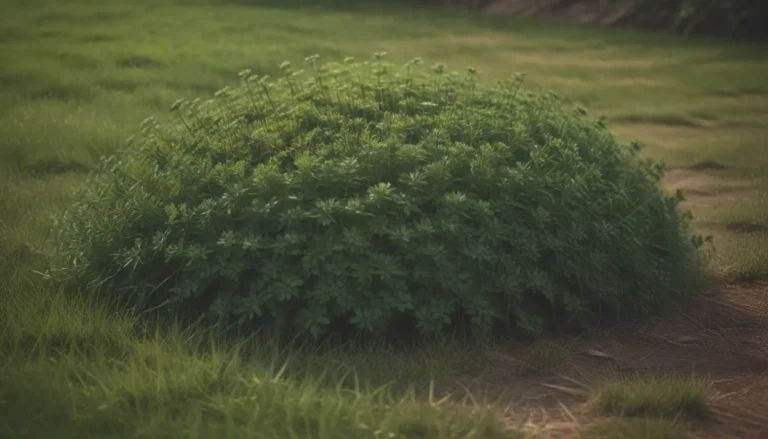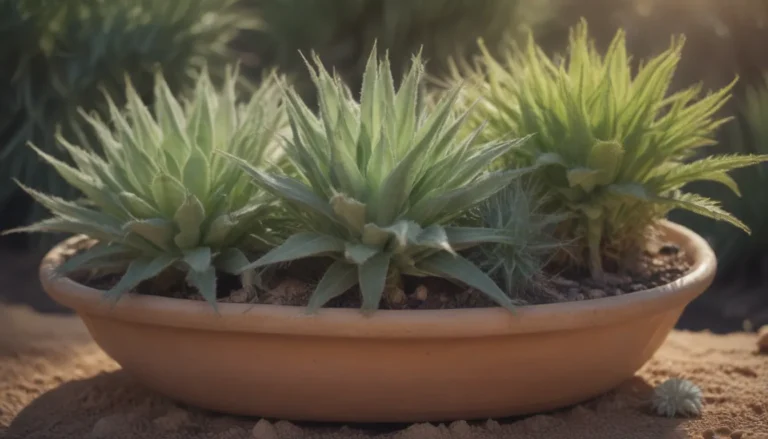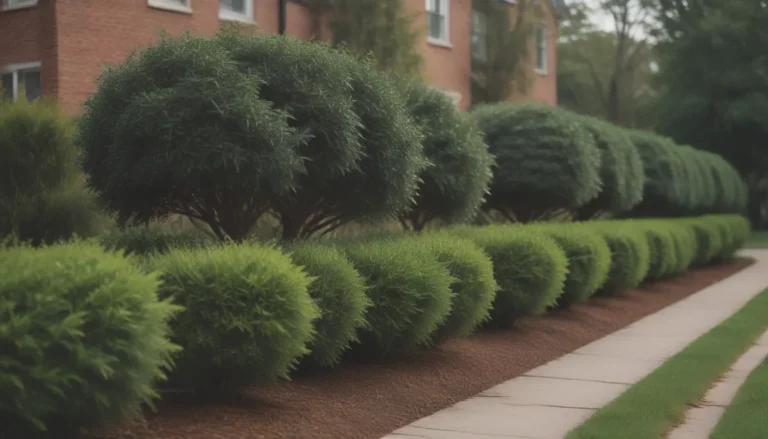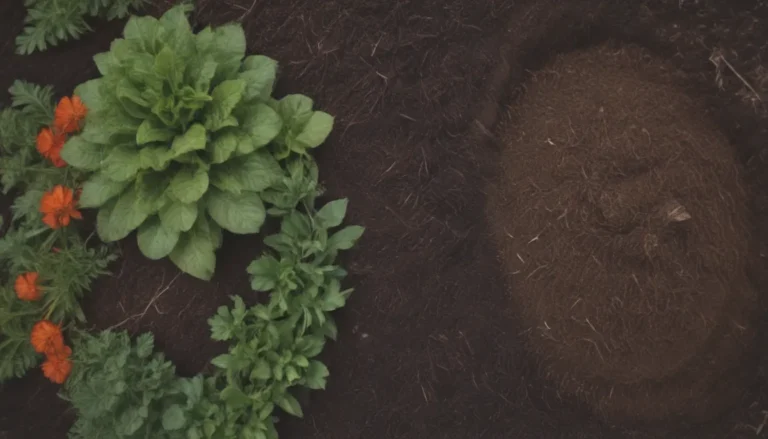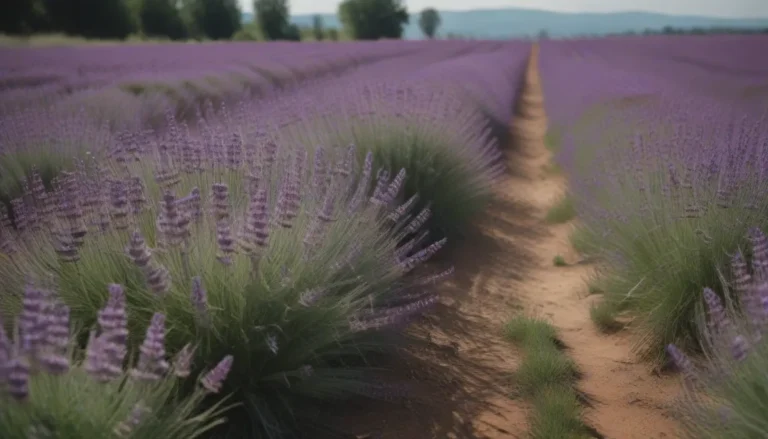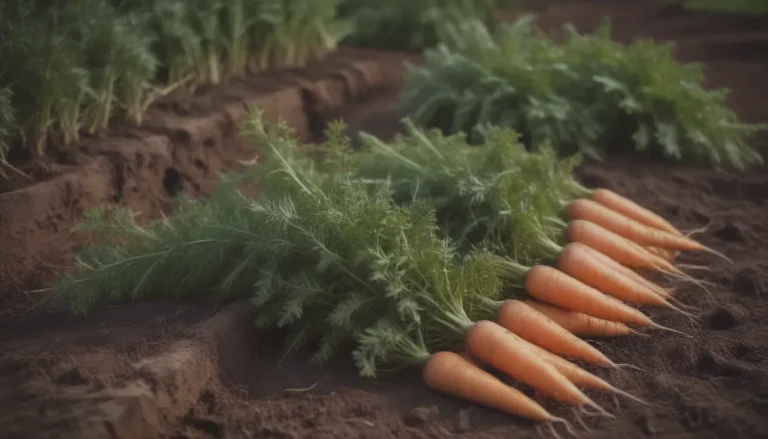Top 45 Gorgeous Summer Flowers to Elevate Your Garden
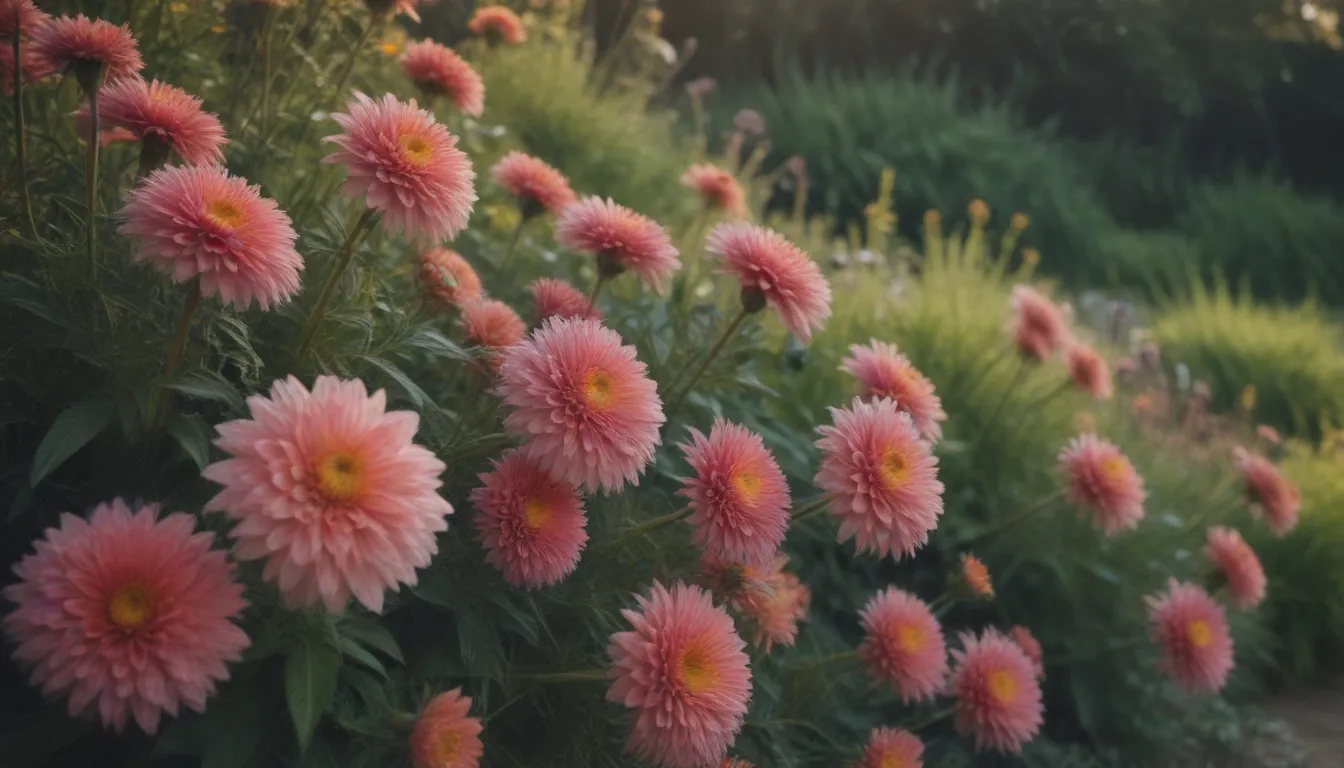
Are you looking to spruce up your outdoor space with vibrant blooms that will last all summer long? Look no further! Growing summer flowers can bring beauty and constant color to your yard throughout the warm months. Choosing flowers that bloom continuously during the summer ensures an ongoing display of color and fragrance that will enhance the ambiance of your garden or patio. Many of these flowers are versatile and can be grown beyond the typical garden bed, including containers for small spaces and hanging planters to add vertical interest.
In this comprehensive guide, we will explore the top 45 stunning summer flowers to help you transform your garden into a colorful paradise. From delicate lilies to cheerful marigolds, each flower offers unique characteristics that will brighten up your outdoor space. Not only will you enjoy the visual appeal of these blooms, but you will also attract essential pollinators like bees and butterflies, which are important to local ecosystems.
So, grab your gardening gloves and get ready to create an inviting environment for yourself while contributing to the beauty of nature. Let’s dive into the world of summer flowers and discover which ones are perfect for your garden!
Discover the Beauty of Each Bloom
Verbena
- Name: Verbena
- USDA Growing Zones: Varied, depending on species
- Color Varieties: Pink, purple, white
- Sun Exposure: Full sun
- Soil Needs: Well-drained
Short-lived perennials that produce clusters of tiny flowers in shades of pink, purple, and white, verbena plants prefer full sun and well-drained soil. Keep in mind that some types of verbena are toxic to animals.
Lily
- Name: Lily
- USDA Growing Zones: Varied, depending on species
- Color Varieties: Various
- Sun Exposure: Full sun to partial shade
- Soil Needs: Well-drained
Tall, elegant flowers with trumpet-shaped blooms in various colors, lilies prefer full sun to partial shade and well-drained soil. These fragrant flowers are toxic to cats, so be cautious when planting them in your garden.
Black-eyed Susan
- Name: Black-eyed Susan
- USDA Growing Zones: Varied, depending on species
- Color Varieties: Yellow
- Sun Exposure: Full sun
- Soil Needs: Well-drained
Native wildflowers with yellow, daisy-like blooms and dark centers, black-eyed Susans thrive in full sun and well-drained soil. These self-seeding plants effortlessly bloom all summer long.
Borage
- Name: Borage
- USDA Growing Zones: Varied, depending on species
- Color Varieties: Blue
- Sun Exposure: Full sun
- Soil Needs: Well-drained
Easy and fast-growing herbs that offer clusters of star-shaped blue flowers, borage plants have a fresh smell like cucumbers. They prefer full sun and well-drained soil, and can be slightly toxic to humans and animals.
Penstemon
- Name: Penstemon
- USDA Growing Zones: Varied, depending on species
- Color Varieties: Blue, purple, pink, white
- Sun Exposure: Full sun to partial shade
- Soil Needs: Well-drained
Also called beardtongue, penstemons produce spikes of tubular flowers in various shades. They prefer full sun to partial shade and well-drained soil, growing up to 8 feet tall and blooming in the spring and early summer.
Transform Your Garden with Summer Blooms
Embark on a journey of discovery as you explore the beauty of various summer flowers. You can mix and match different blooms to create a colorful and inviting outdoor space that will be the envy of your neighbors. Whether you prefer the classic elegance of roses or the whimsical charm of zinnias, there is a summer flower for every taste and style.
Let’s continue our exploration and delve into more fabulous summer blooms that will elevate your garden to new heights of beauty and sophistication.
Yarrow
- Name: Yarrow
- USDA Growing Zones: Varied, depending on species
- Color Varieties: Pink, yellow, white
- Sun Exposure: Full sun
- Soil Needs: Well-drained
A perennial with flat clusters of tiny flowers in various shades, yarrow plants prefer full sun and well-drained soil. Plant them in the spring for plenty of summer blooms, but be aware that yarrow is toxic to animals.
Crocosmia
- Name: Crocosmia
- USDA Growing Zones: Varied, depending on species
- Color Varieties: Orange, red, yellow
- Sun Exposure: Full sun to partial shade
- Soil Needs: Well-drained
Clusters of tubular flowers in vibrant shades, crocosmia plants prefer full sun to partial shade and well-drained soil. This perennial makes its appearance in the early summer with its eye-catching blooms.
Hydrangea
- Name: Hydrangea
- USDA Growing Zones: Varied, depending on species
- Color Varieties: Blue, pink, purple, white
- Sun Exposure: Partial shade
- Soil Needs: Moist, well-drained
One of the most popular perennial shrubs, hydrangeas feature large, showy blooms in various shades. They prefer partial shade and moist, well-drained soil, offering a stunning display from early summer into fall.
Roses
- Name: Roses
- USDA Growing Zones: Varied, depending on species
- Color Varieties: Red, pink, yellow, white
- Sun Exposure: Full sun
- Soil Needs: Well-drained
Known for their velvety petals and divine fragrance, roses come in various colors and types. They thrive in sunny locations with well-drained soil, blooming from late spring through early fall.
Zinnia
- Name: Zinnia
- USDA Growing Zones: Varied, depending on species
- Color Varieties: Various
- Sun Exposure: Full sun
- Soil Needs: Well-drained
Easy-to-grow annuals with vibrant, daisy-like flowers in various colors, zinnias thrive in full sun and well-drained soil. They bloom all summer and last into the fall season, adding a burst of color to your garden.
Create a Colorful Haven with Summer Flowers
As you embark on your gardening journey, remember to choose flowers that suit your climate and growing conditions. Whether you have a small patio or a sprawling garden, there are summer flowers that will thrive in your outdoor space. From delicate petals to vibrant hues, each bloom offers a unique charm that will enhance the beauty of your garden.
Continue to explore the world of summer flowers and experiment with different varieties to create a colorful haven that reflects your personal style. By incorporating a mix of perennials and annuals, you can enjoy a continuous display of blooms throughout the summer months. So, roll up your sleeves, grab your gardening tools, and let’s get planting!
Bee Balm
- Name: Bee Balm
- USDA Growing Zones: Varied, depending on species
- Color Varieties: Red, pink, purple
- Sun Exposure: Full sun to partial shade
- Soil Needs: Moist, well-drained
Known for its clusters of tubular flowers with spikey petals in shades of red, pink, and purple, bee balm prefers full sun to partial shade and moist, well-drained soil. These perennials grow by rhizomes and bloom in the mid-summer into early fall.
Marigold
- Name: Marigold
- USDA Growing Zones: Varied, depending on species
- Color Varieties: Orange, yellow
- Sun Exposure: Full sun
- Soil Needs: Well-drained
Common annual flowers with bright orange or yellow blooms and a distinctive scent, marigolds thrive in full sun and well-drained soil. These summer bloomers rarely need help to flower in the summer.
Begonia
- Name: Begonia
- USDA Growing Zones: Varied, depending on species
- Color Varieties: Red, pink, orange, white
- Sun Exposure: Partial shade
- Soil Needs: Well-drained
Producing clusters of colorful single or double flowers in various shades, begonias prefer partial shade and well-drained soil. This annual flower blooms from summer into late fall, adding a pop of color to your garden.
Shasta Daisy
- Name: Shasta Daisy
- USDA Growing Zones: Varied, depending on species
- Color Varieties: White
- Sun Exposure: Full sun
- Soil Needs: Well-drained
Short-lived perennials that produce large, white flowers with yellow centers, shasta daisies prefer full sun and well-drained soil. This cheerful flower blooms from spring through summer but can be toxic to animals.
Sweet William
- Name: Sweet William
- USDA Growing Zones: Varied, depending on species
- Color Varieties: Pink, red, white
- Sun Exposure: Full sun to partial shade
- Soil Needs: Well-drained
A short-lived perennial or biennial, sweet Williams produce clusters of small, fragrant flowers in shades of pink, red, and white. They prefer full sun to partial shade and well-drained soil, blooming from May through October.
Geranium
- Name: Geranium
- USDA Growing Zones: Varied, depending on species
- Color Varieties: Red, pink, white
- Sun Exposure: Full sun to partial shade
- Soil Needs: Well-drained
Common garden and container plants, geraniums are most often grown as annuals for their fragrant clusters of colorful flowers. They prefer full sun to partial shade and well-drained soil, blooming from spring through the fall.
Petunia
- Name: Petunia
- USDA Growing Zones: Varied, depending on species
- Color Varieties: Various
- Sun Exposure: Full sun
- Soil Needs: Well-drained
Popular annuals with trumpet-shaped flowers in various colors, petunias thrive in full sun and well-drained soil. These prolific bloomers will brighten up your garden all summer long.
Daylily
- Name: Daylily
- USDA Growing Zones: Varied, depending on species
- Color Varieties: Various
- Sun Exposure: Full sun to partial shade
- Soil Needs: Well-drained
Low-maintenance perennials that grow clusters of trumpet-shaped flowers in various colors, daylilies thrive in full sun to partial shade and well-drained soil. You can find them blooming from midsummer into the autumn.
Cosmos
- Name: Cosmos
- USDA Growing Zones: Varied, depending on species
- Color Varieties: Pink, white, purple
- Sun Exposure: Full sun
- Soil Needs: Well-drained
Cottage-garden annuals that produce delicate, daisy-like flowers in various shades, cosmos plants prefer full sun and well-drained soil. This fast-growing flower blooms in the summer through the fall, adding a touch of whimsy to your garden.
Blanket Flower
- Name: Blanket Flower
- USDA Growing Zones: Varied, depending on species
- Color Varieties: Red, orange, yellow
- Sun Exposure: Full sun
- Soil Needs: Well-drained
Easy-growing, fast-spreading perennials with daisy-like blooms in red, orange, and yellow shades, blanket flowers thrive in full sun and well-drained soil. They are repeat bloomers in the summer through the autumn, although this flower is slightly toxic to humans.
Salvia
- Name: Salvia
- USDA Growing Zones: Varied, depending on species
- Color Varieties: Blue, purple, red, white
- Sun Exposure: Full sun
- Soil Needs: Well-drained
Known for their spikes of fragrant, tubular flowers in various shades, salvias prefer full sun and well-drained soil. Most salvia plants have long bloom times, from late spring into the fall, adding fresh color to your garden.
Fuchsia
- Name: Fuchsia
- USDA Growing Zones: Varied, depending on species
- Color Varieties: Pink, purple, red
- Sun Exposure: Partial shade
- Soil Needs: Moist, well-drained
Producers of pendulous flowers in shades of pink, purple, and red, fuchsias prefer partial shade and moist, well-drained soil. With their drooping stems and flowers, fuchsias make a handsome display from spring into the fall.
Peony
- Name: Peony
- USDA Growing Zones: Varied, depending on species
- Color Varieties: Pink, white, red
- Sun Exposure: Full sun
- Soil Needs: Fertile, well-drained
Perennials with large, showy, and heavenly fragrant blooms in various shades, peonies prefer full sun and fertile, well-drained soil. They begin to bloom in the spring and continue into the late summer, although they are toxic to animals.
Sunflowers
- Name: Sunflowers
- USDA Growing Zones: Varied, depending on species
- Color Varieties: Yellow
- Sun Exposure: Full sun
- Soil Needs: Well-drained
Tall annual plants with large, bright yellow blooms that follow the sun, sunflowers thrive in full sun and well-drained soil. Fragrant sunflowers bloom from midsummer and sometimes persist into the early autumn.
Foxglove
- Name: Foxglove
- USDA Growing Zones: Varied, depending on species
- Color Varieties: Pink, purple, white
- Sun Exposure: Partial shade
- Soil Needs: Moist, well-drained
Producing tall spikes of tubular flowers in various shades, foxgloves prefer partial shade and moist, well-drained soil. Be patient since this biennial blooms in its second year and is toxic to humans and animals.
Clematis
- Name: Clematis
- USDA Growing Zones: Varied, depending on species
- Color Varieties: Blue, purple, pink, white
- Sun Exposure: Full sun to partial shade
- Soil Needs: Moist, well-drained
Known as leather flowers, clematis vines produce large, showy flowers in various shades. They prefer full sun to partial shade and moist, well-drained soil, blooming from early summer into early fall, although they are toxic to humans and animals.
Chrysanthemum
- Name: Chrysanthemum
- USDA Growing Zones: Varied, depending on species
- Color Varieties: Various
- Sun Exposure: Full sun
- Soil Needs: Well-drained
Perennials with pom-pom-like blooms in various vibrant colors, chrysanthemums prefer full sun and well-drained soil. Purchase mums with many unopened buds for blooms from summer into the fall, although they are toxic to animals.
Coreopsis
- Name: Coreopsis
- USDA Growing Zones: Varied, depending on species
- Color Varieties: Yellow, orange, red
- Sun Exposure: Full sun
- Soil Needs: Well-drained
Also known as tickseed, coreopsis plants are perennials with daisy-like flowers in various shades. They thrive in full sun and well-drained soil, making them easy to grow, drought-tolerant, and long-blooming throughout the summer.
Lavender
- Name: Lavender
- USDA Growing Zones: Varied, depending on species
- Color Varieties: Purple
- Sun Exposure: Full sun
- Soil Needs: Well-drained, slightly alkaline
Known for its fragrant purple flowers and silvery-green foliage, lavender prefers sunny areas with well-drained, slightly alkaline soil. Lavender will bloom in the summer but may appear earlier or later in the season depending on the variety, although it is toxic to cats.
Cardinal Flower
- Name: Cardinal Flower
- USDA Growing Zones: Varied, depending on species
- Color Varieties: Red
- Sun Exposure: Partial shade to full sun
- Soil Needs: Moist, well-drained
A vibrant perennial with striking red flowers that attract hummingbirds and butterflies, the cardinal flower thrives in moist, well-drained soil and prefers partial shade to full sun. This flower blooms from midsummer into the early autumn and is toxic to animals.
Columbine
- Name: Columbine
- USDA Growing Zones: Varied, depending on species
- Color Varieties: Various
- Sun Exposure: Partial shade
- Soil Needs: Moist, well-drained
A short-lived perennial that produces unique airy spurred flowers in various shades, columbines prefer partial shade and moist, well-drained soil. This flower blooms in the spring and summer, adding a touch of whimsy to your garden.
Tiger Lily
- Name: Tiger Lily
- USDA Growing Zones: Varied, depending on species
- Color Varieties: Orange
- Sun Exposure: Full sun to partial shade
- Soil Needs: Well-drained
A summer-blooming perennial with vibrant orange flowers marked with dark spots, tiger lilies prefer full sun to partial shade and well-drained soil. Lilies are toxic to cats, so be cautious when planting them in your garden.
Hibiscus
- Name: Hibiscus
- USDA Growing Zones: Varied, depending on species
- Color Varieties: Various
- Sun Exposure: Full sun
- Soil Needs: Moist, well-drained
Hibiscus flowers come in various colors and sizes, often with large, showy blooms up to 12 inches in diameter. They prefer full sun and moist, well-drained soil, blooming from June into fall.
Daisy
- Name: Daisy
- USDA Growing Zones: Varied, depending on species
- Color Varieties: White, pink
- Sun Exposure: Full sun to partial shade
- Soil Needs: Well-drained
Low-growing plants with white or pink flowers and yellow centers, daisies thrive in full sun to partial shade and well-drained soil. This perennial blooms from May through July but can be toxic to animals.
Liatris
- Name: Liatris
- USDA Growing Zones: Varied, depending on species
- Color Varieties: Purple, white, pink
- Sun Exposure: Full sun
- Soil Needs: Well-drained
Plants that produce tall spikes of tiny flowers in various shades, liatris prefer full sun and well-drained soil. This perennial blooms from summer into early fall, adding a touch
